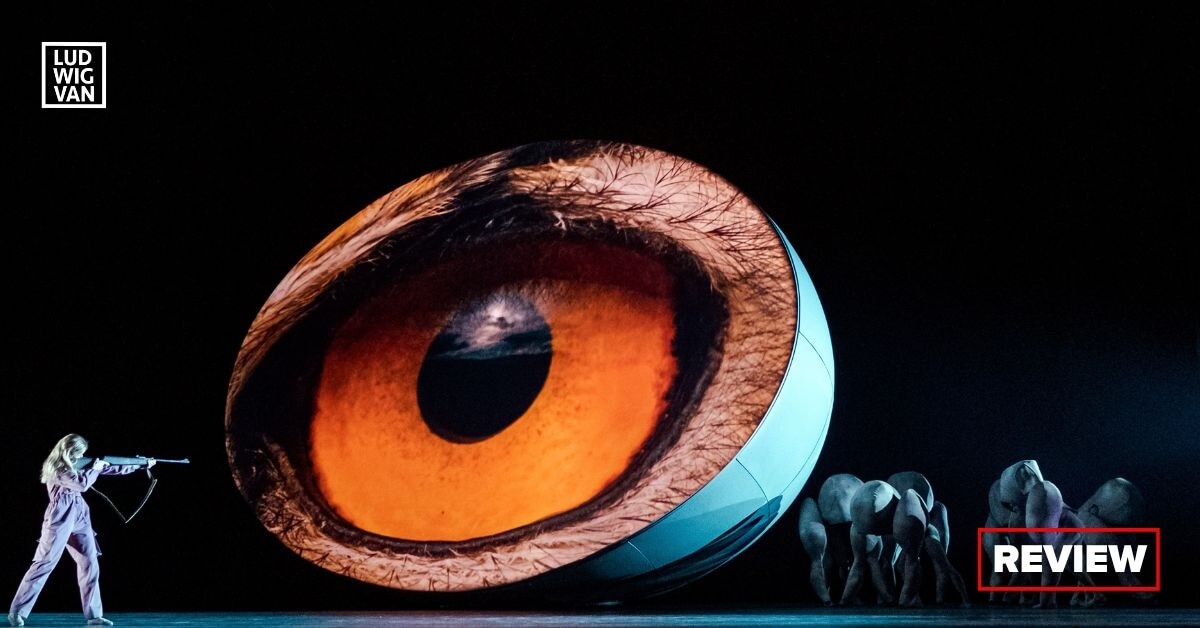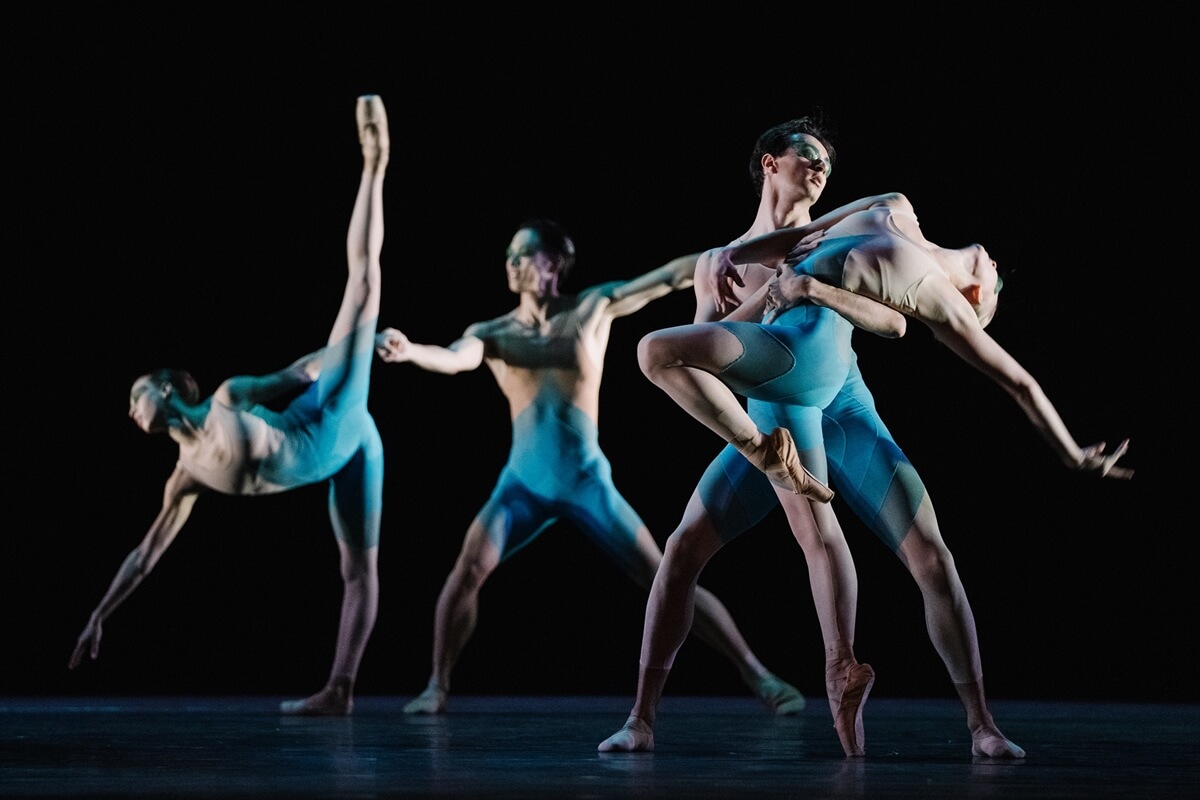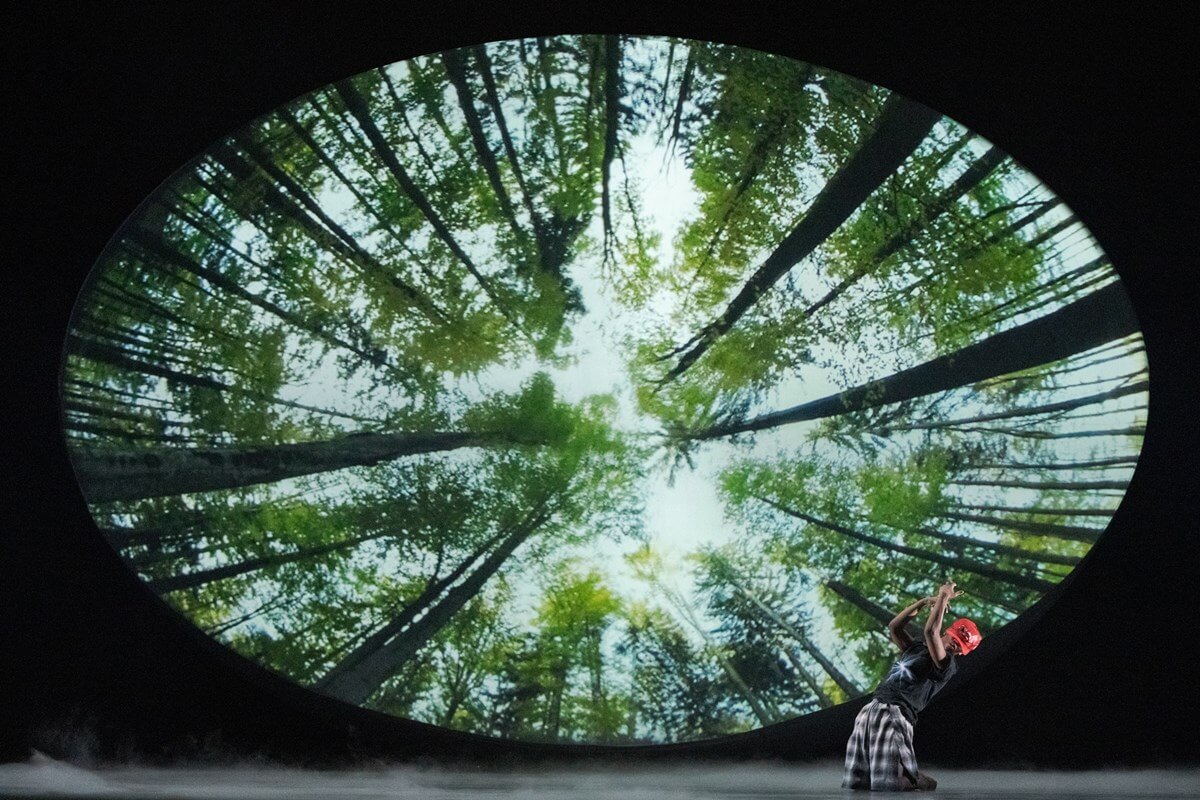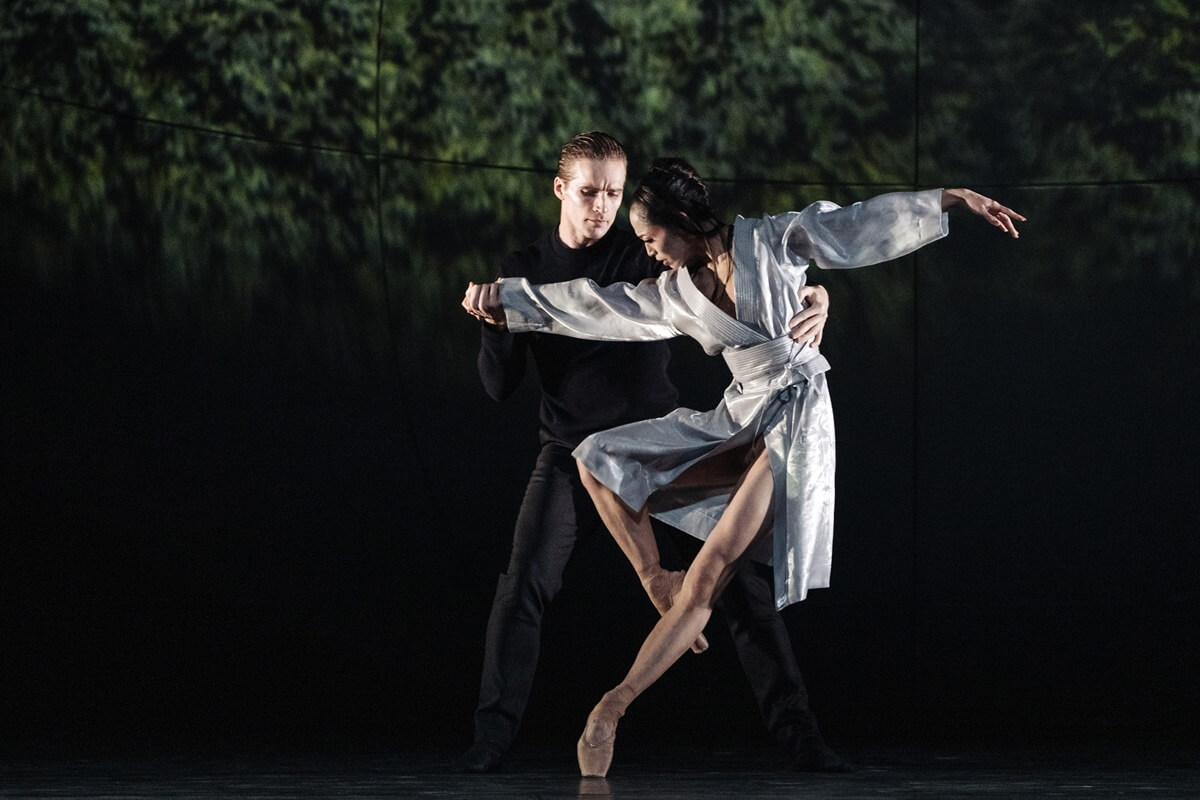
The National Ballet of Canada/MaddAddam, choreographed by Wayne McGregor, inspired by Margaret Atwood’s MaddAddam Trilogy, original score by Max Richter, Four Seasons Centre, Nov. 23 to Nov. 30. Tickets available here.
There are some reviews that literally write themselves, with the words tripping lightly off the page, and then there are others that don’t. British choreographer Wayne McGregor’s world premiere MaddAddam for the National Ballet (and The Royal Ballet) sits in the latter camp.
What follows is my best shot at unpacking this new work. My “Citron’s Guide to MaddAddam” also includes suggestions on how to approach this dense and oblique ballet, such as they are.
There is ambitious, and then there is chutzpah, which is a giant leap forward from the former. In other words, McGregor is fearless in his pursuit of a project.
The ballet MaddAddam is inspired by the MaddAddam Trilogy penned by prolific Canadian author Margaret Atwood. Let’s face it, the multi-award winning Atwood is one of the Queens of CanLit whose reputation encircles the world. You don’t win a Booker Prize (among others) if you’re chopped liver.
Her broad theme in the trilogy is dystopia, with the main event being a plague that has practically wiped out humanity, the result of bioengineering, corporate greed and technology run amuck. In very simplistic terms, both the past and the present of a post-apocalyptic world are described in the three novels — Oryx and Crake (2003), The Year of the Flood (2009), and MaddAddam (2013). The first two novels take place at the same time, but are told through different perspectives, although some characters overlap. MaddAddam carries both novels to a conclusion.
The burning question is, how on earth is this monumental trilogy going to be transformed into dance?
McGregor’s ballet comprises three acts, but the first thing to note is that each act is not devoted to one of the books. That would be too easy, and McGregor’s canon of choreography is anything but easy. The man is a philosopher of dance. British writer and director Uzma Hameed functioned as dramaturge on MaddAddam, and she has written the program notes, so let’s follow her direction.

According to Hameed, Act 1 Castaway uses the idea of parallel time by placing key characters from the first two novels in the same geographic space (i.e. the stage) shortly after the plague has destroyed the world.
We meet Jimmy (Siphesihle November), who is the central figure of the first novel, Toby (Heather Ogden), and Ren (Tanya Howard), the main protagonists of the second. From the first novel comes Crake (Harrison James), the scientist who started the plague to rid the world of rotten humanity, and the mysterious Oryx (Koto Ishihara), who is lover to both Crake and Jimmy. There is also Ren’s friend Amanda (Jenna Savella), and the baddies — Blanco (Piotr Stanczyk) and the two Painballers (Peng-Fei Jiang and Spencer Hack).
There are assorted Crakers, (the gentle creatures Crake bioengineered to replace humanity), Pigoons (monster hybrid pigs developed to provide body parts), and other survivors, including God’s Gardeners, a religious cult devoted to the environment.
The second act Extinctathon is named after an online trivia game featured in the novels. Here, writes Hameed, the focus is on the dystopian society that existed before the plague, and how our own reality is reflected in that world. I am also adding in (Hameed permitting) that the act includes depictions of major characters and their relationships.
Joining the nine dancers from the first act are nine additional ones. They are all dressed the same and are virtually anonymous. These 18 dancers portray numbered Players, which is how they are listed in the program. When one or two break away from the mass, however, the front screen projections give them names, and the time frame we are dealing with, such as Zeb and Adam Yr 16, or Amanda and Jimmy Yr 20, so we know who they are, and where we are in time.

Act 3 Dawn allows the idea of hope, explains Hameed, as the act picks up where the third novel ends. It is McGregor’s vision of a future that goes beyond Atwood.
Important here are the Descendants from Ren (Genevieve Penn Nabity) and Amanda (Calley Skalnik). McGregor also introduces Descendant Blackbeard (Jason Ferro), a highly evolved Craker from the third novel. There is also a corps de ballet of Descendants and Descendant Children (from the National Ballet School), and, lest we forget, the now kinder and gentler Pigoons.
This act also features the Ancestors — and so we meet again Jimmy, Toby, Ren, Amanda, Crake and Oryx, along with Adam (Ben Rudisin) and Zeb (Christopher Gerty). These last two are brothers. Adam founded God’s Gardeners, while Zeb is a major protagonist in the third novel, and Toby’s lover.
So let’s talk about the choreography. This is after all a dance piece that features both on and off point.
What McGregor has done, when you think about it, is create a million different dance trajectories. Take the first act, for example. Jimmy, Crake and Oryx perform solos, duets and trios. We see Blanco stalking Ren, and the Painballers raping Amanda. In the second act we get fragments of relationships or meditative solos, along with herd mentality, while the Descendants lead a glorious pathway to the future, with the Ancestors commenting in individualized movement.
McGregor is an acknowledged dancesmith who creates beautiful bodies in space, but there is a lot going on, needless to say, with the first act being the most busy. The third act has more clarity than the first, with the second having perhaps the sharpest focus, given the breakaways.
This is a piece that dances, and McGregor makes the National look good, but it is almost too much to take in. You don’t know where to focus, which is a shame, because everywhere you look, something interesting is happening.

You want to concentrate on the Jimmy/Crake/Oryx trio, for example, only to have your eye pulled away by Ren and Toby. And don’t forget the corps (and monster Pigoons) that come and go. Also complicating the mix are the many shifts in time backward and forward.
The program only lists the character names (and not their roles in the novels, which I’ve somewhat provided), which leads me to think that McGregor doesn’t care if you know the books. I think he sees MaddAddam as an impressionist painting. He’s provided choreography that alludes to character and relationship and theme, and you should approach the piece as you would pictures by Monet or Renoir.
McGregor has also provided three very different takes on the trilogy, none of which is direct narrative, but rather, are concepts which conform to his reputation as an original thinker. Thus, there is a slightly fragmented quality to the piece as a whole. One may agree or not with his treatment of Atwood’s novels, which I also believe is McGregor attempt to deliberately challenge the audience, but what can’t be denied is that there is some classy dance happening on stage.

Those familiar with Atwood’s trilogy will have a better sense of what is going on in MaddAddam, but my advice to those who haven’t read the books is, not to worry. Just let the dance wash over you. Every movement has meaning. On the other hand, being familiar with the books may pose a greater problem, as those people might look for straightforward storytelling that is not there.
The original music is by the prolific composer Max Richter, a frequent collaborator of McGregor’s, and a darling of the classical music world. Young people, in particular, love him for his gorgeous symphonic melodies (some of the score is positively Wagnerian), that can easily riff into bombastic electronica, not to mention chamber music, choral passages, and the spoken word. The live music over tape sequences are stunning. Richter’s music is modernist but accessible, which is a clue to his popularity, and he has pulled out all the stops on this score to create an infinite variety that fills the hall with sound.
So overwhelming is MaddAddam the first time round, that I can’t even get my head in gear to discuss the scenography, projections, costumes and lighting. That’s for another time. Suffice it to say that the list of credits is like the end of a big budget film that go on forever. It took a lot of people to put on this production, and there is a lot to take in. My excuse for the short shrift towards the production values, is that I had to come to grips with the dance.
Suffice it to say, MaddAddam is a 95-minute piece with two intermissions of 25 and 20 minutes each. Each act has completely different sets and costumes, so there is a major set up each time. In other words, the intermissions are almost as long as the acts themselves. Get the picture?
#LUDWIGVAN
Get the daily arts news straight to your inbox.
Sign up for the Ludwig van Daily — classical music and opera in five minutes or less HERE.
- INTERVIEW | Actor Diego Matamoros Takes On Icon Walt Disney In Soulpepper Production Of Hnath Play - April 16, 2024
- SCRUTINY | Opera In Concert Shine A Light On Verdi’s Seldom Heard La Battaglia Di Legnano - April 9, 2024
- SCRUTINY | Lepage & Côté’s Hamlet Dazzles With Dance And Stagecraft Without Saying Anything New - April 5, 2024



